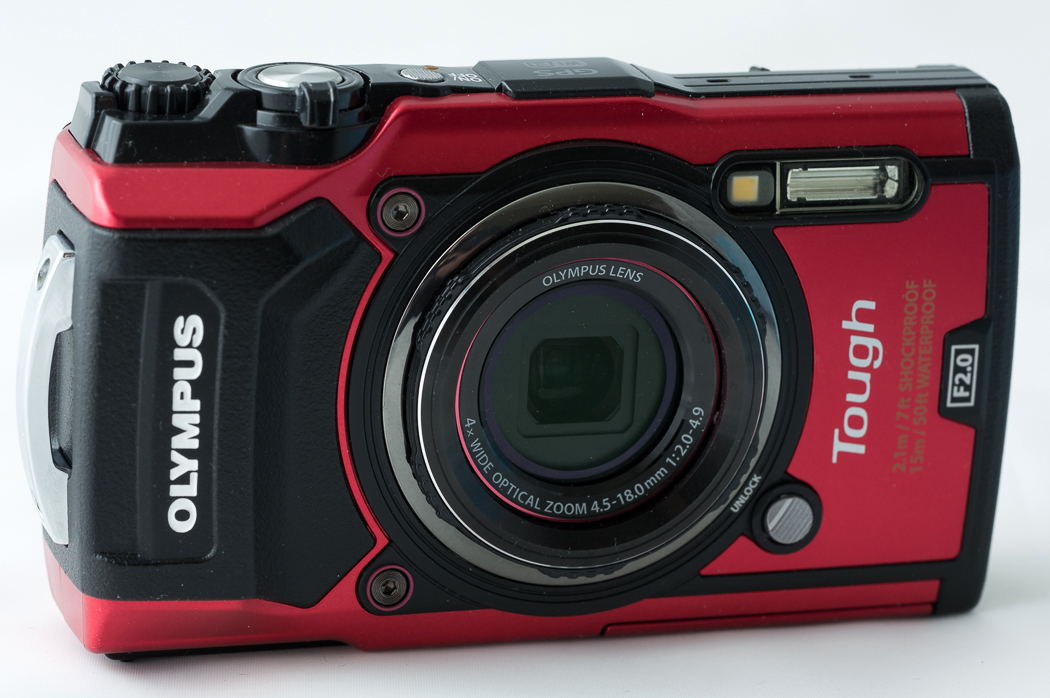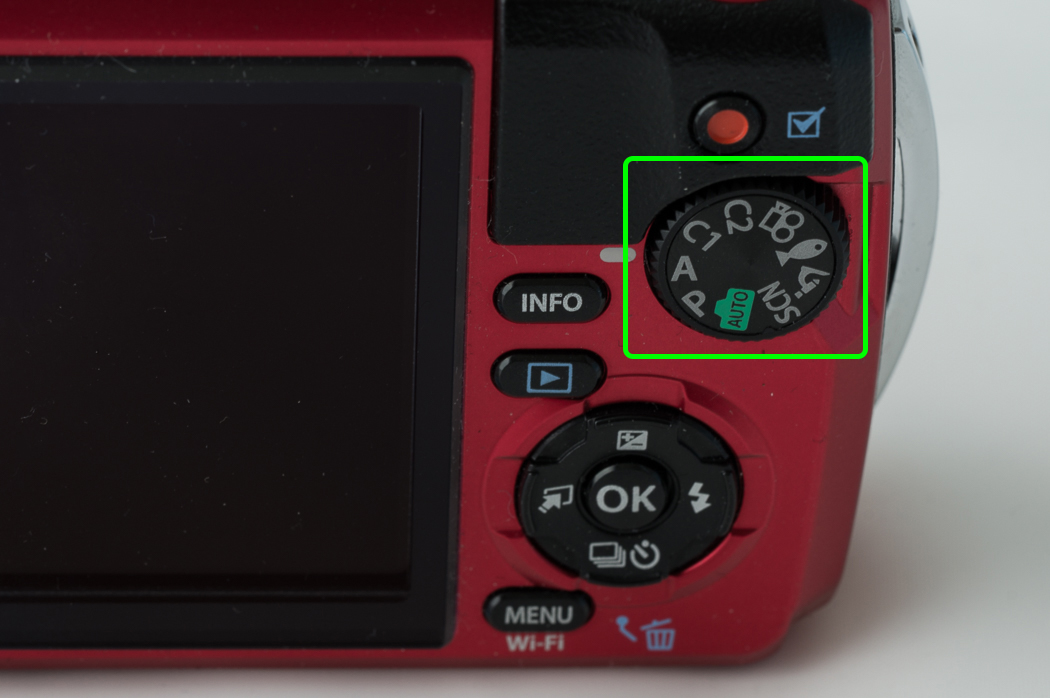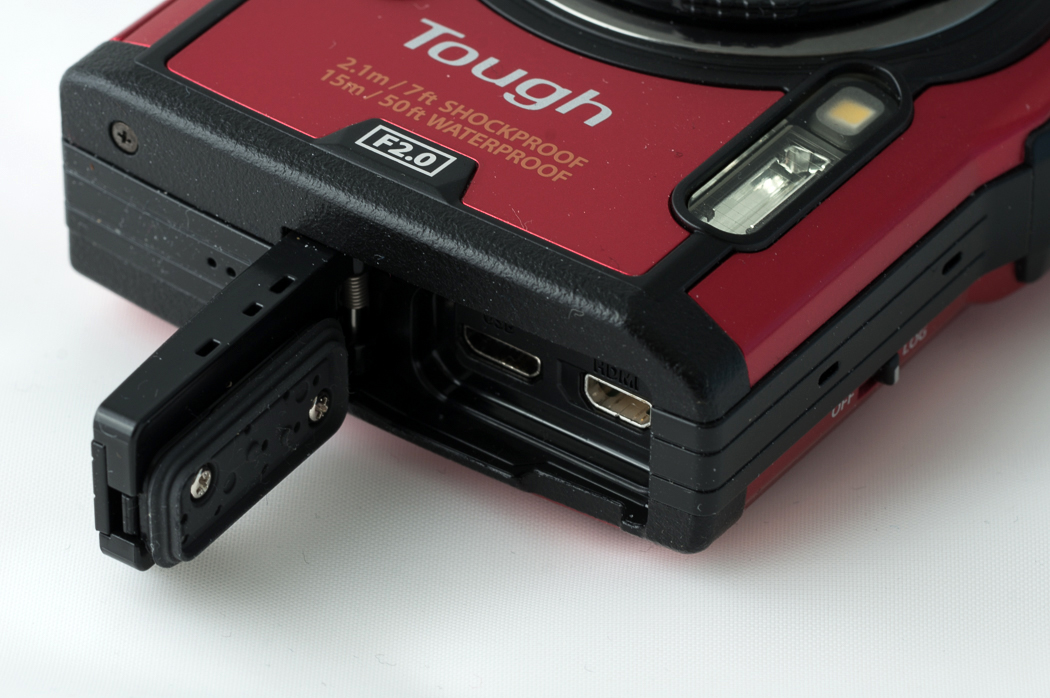 The Olympus Tough TG-5 is the latest in the TG series of rugged, durable point-and-shoots. This is truly a take-anywhere camera; shockproof to withstand falls from a height of 2 meters, waterproof to a depth of 15 meters, and able to withstand a crushing force of 100kg. You can also bring it on your snowy adventures where it’ll comfortably withstand temperatures as low as -10°C. A real outdoor warrior, which also comes with GPS to allow you to track your movements by recording the exact position where each frame was captured.
The Olympus Tough TG-5 is the latest in the TG series of rugged, durable point-and-shoots. This is truly a take-anywhere camera; shockproof to withstand falls from a height of 2 meters, waterproof to a depth of 15 meters, and able to withstand a crushing force of 100kg. You can also bring it on your snowy adventures where it’ll comfortably withstand temperatures as low as -10°C. A real outdoor warrior, which also comes with GPS to allow you to track your movements by recording the exact position where each frame was captured.
Inside is a new 12 megapixel sensor – that’s right, a mere 12 megapixels, as opposed to 16 megapixels that came with the TG-4. Olympus has taken the brave decision to opt out of the megapixel arms race and acknowledge that when it comes to pixels, more isn’t necessarily better. In fact using less, but bigger pixels actually allows a sensor to capture a better image with less noise artifacts.
The TG-5 is capable of 4x optical zoom, with an effective focal length of 25-100mm, which is a nice range for street photography, landscapes and portraits. It also has an Accessory Lock which allows you to install optional extras like a fisheye lens, a teleconverter lens (which increases the zoom to 7x), and a ring flash for macro photography. The camera has a microscopic mode which allows you to photograph subjects as close as 1cm away. It can be hard to nail your focus at such close range, but it’s fun to play with nonetheless. The image below was actually lit by the on-board flash, which worked out well in this instance, but I found in general to be a bit more miss than hit. And that’s where the LG-1 Light Guide ring flash add-on comes in handy, providing a more reliable, better positioned light source.

Image Quality and the TG-5
Nowadays I don’t get too caught up in questions of image quality for individual cameras; we’re at a point where any new camera from a reputable manufacturer will create decent images relative to its sensor size. Essentially the bigger the sensor the better the image. So the images from the TG-5 are as I would expect – they’re ok, but not nearly as good as those from a DSLR or a mirrorless with an APS-C sensor.

The TG-5 has a host of creative shooting options, not all of which I found particularly useful, although that could likely change from scene to scene. The problem is that the filters are applied when you take the photo, and if you don’t like the effect, well, it’s pretty much tough luck because you’re stuck with it. I personally prefer to apply filters after the fact so that I’m not committed to one particular look. Here are some examples of art modes from the TG-5, the first of which I don’t feel worked that well, whereas the second was very effective.


The TG-5 shoots 4k and great slow motion videos
Where things start to get really interesting with the TG-5 however is in video mode: the TG-5 shoots 4k and it shoots full HD at frame rates up to 120 frames per second, which allows you to create some really cool slo-mos. These are very impressive features for a point-and-shoot. Check out the video below to see some sample videos that I captured myself.
As with the still images, the quality of the video is ok, not necessarily out of this world, but to be able to take a camera into the ocean and shoot at 120fps is pretty special, and a major selling feature of the TG-5. On the downside, I didn’t find the camera very responsive in video mode. When I pressed the record button the camera didn’t always start recording instantly as I would expect, and similarly it didn’t always stop when I pressed it again. I found things were more unpredictable when shooting at higher frame rates, so this may well be a by-product of limited processing power. In the end I got some really cool shots, but also a lot of random shots of the ground.
Also, I would have liked a wrist strap that I could cinch up tightly around my wrist to reduce the possibility of losing the camera in the water.
 Other notable features of the TG-5
Other notable features of the TG-5
The TG-5 can shoot up to 20 photos per second, which is about as fast as any camera I’ve come across. It has an interesting feature called Focus Stacking which allows you to get a much wider depth of field, getting everything in the frame in focus by compositing a number of shots together. I liked the big LCD screen on the back, but it’s hardly a world-beater at 460k dots (better screens have over 1M dots), and sadly it’s not a touchscreen. I’m still surprised that in 2017 touchscreens aren’t a standard feature, considering our smartphone reliant lifestyles, but there may well be a good reason that I’m not aware of. The on-camera flash can be tweaked to give you full control over its output, which is something you don’t usually see on a point-and-shoot. You can capture either RAW or compressed jpeg images, my preference being RAW because it gives me more leeway to post-process my images. The camera also has built-in wifi which unfortunately I didn’t have a chance to test. Finally, the camera can be recharged by USB, which is awesome because it means you don’t need a proprietary charger, just a fairly standard USB cable. This is particularly handy when you’re travelling.

Final thoughts on the TG-5
The TG-5 has a number of drawbacks for me, notably the poor responsiveness in video mode, and also the limited battery life, but considering the video capabilities and the fact that it’s waterproof, it is pretty much in a league of it’s own. If you’ve ever looked into a waterproof housing for your own camera you’ll know that they’re surprisingly expensive, so a camera with waterproofing as standard is a pretty neat thing. If you have an adventurous streak and you want a camera you can take pretty much anywhere you want, then the Olympus TG-5 is a great option.



